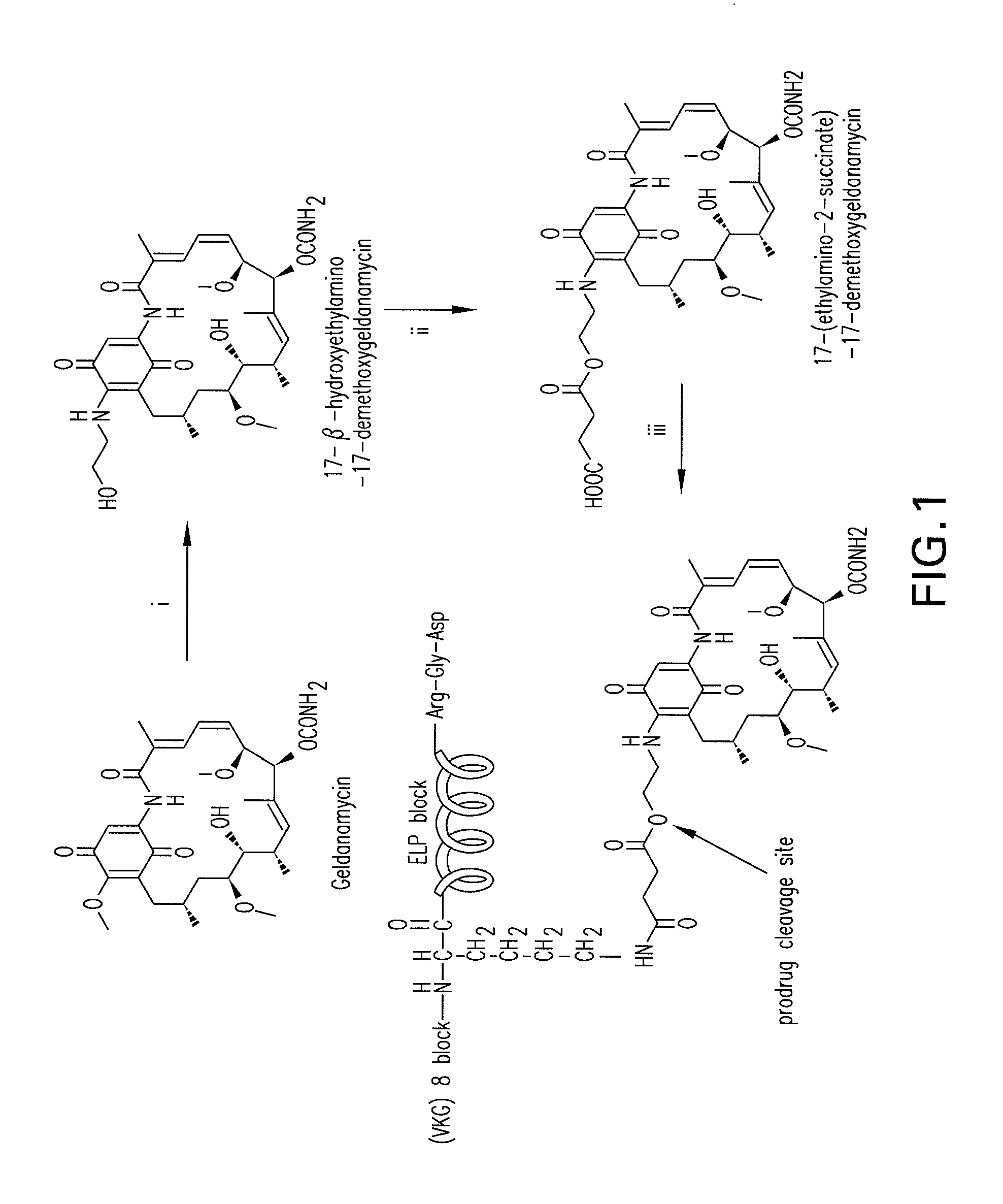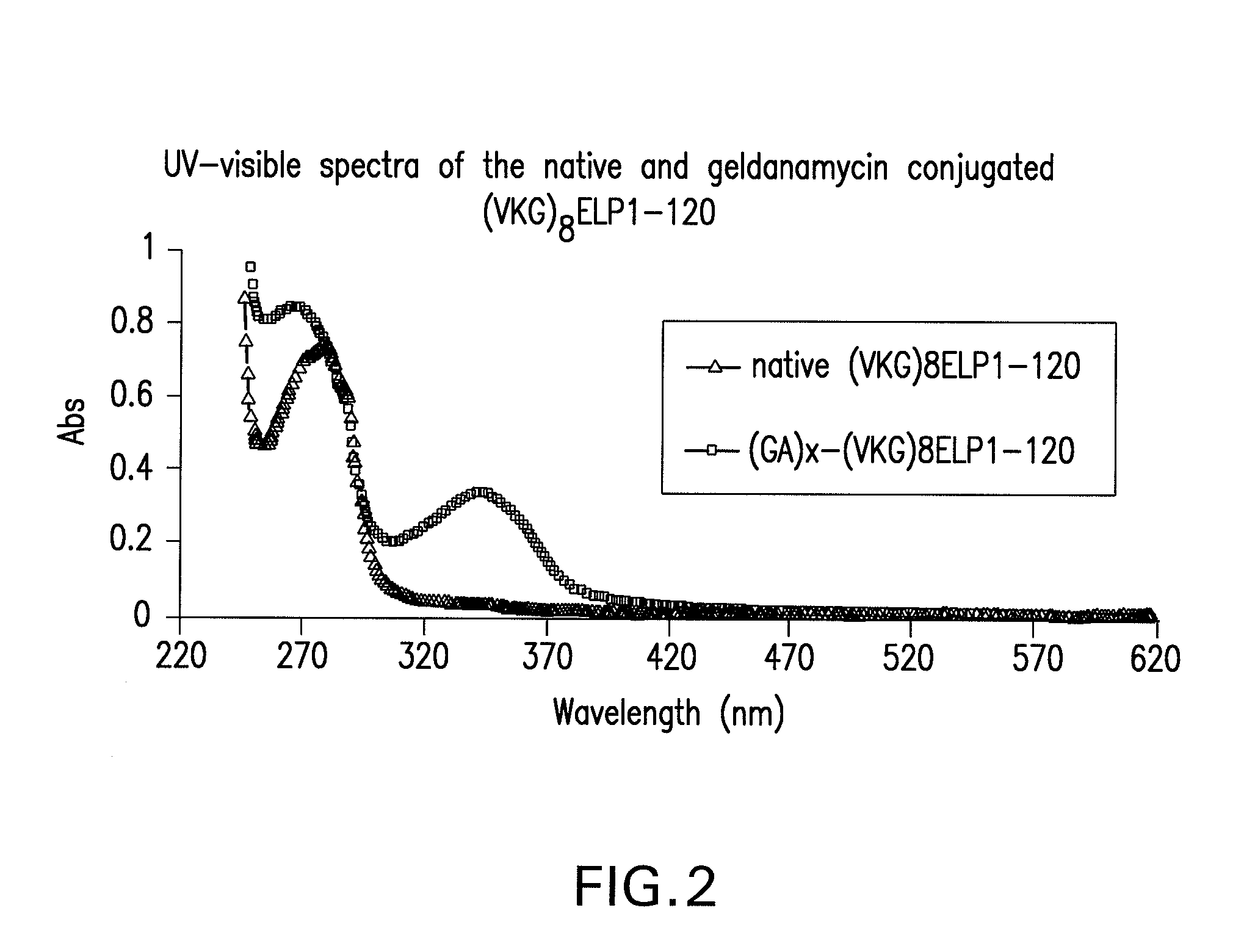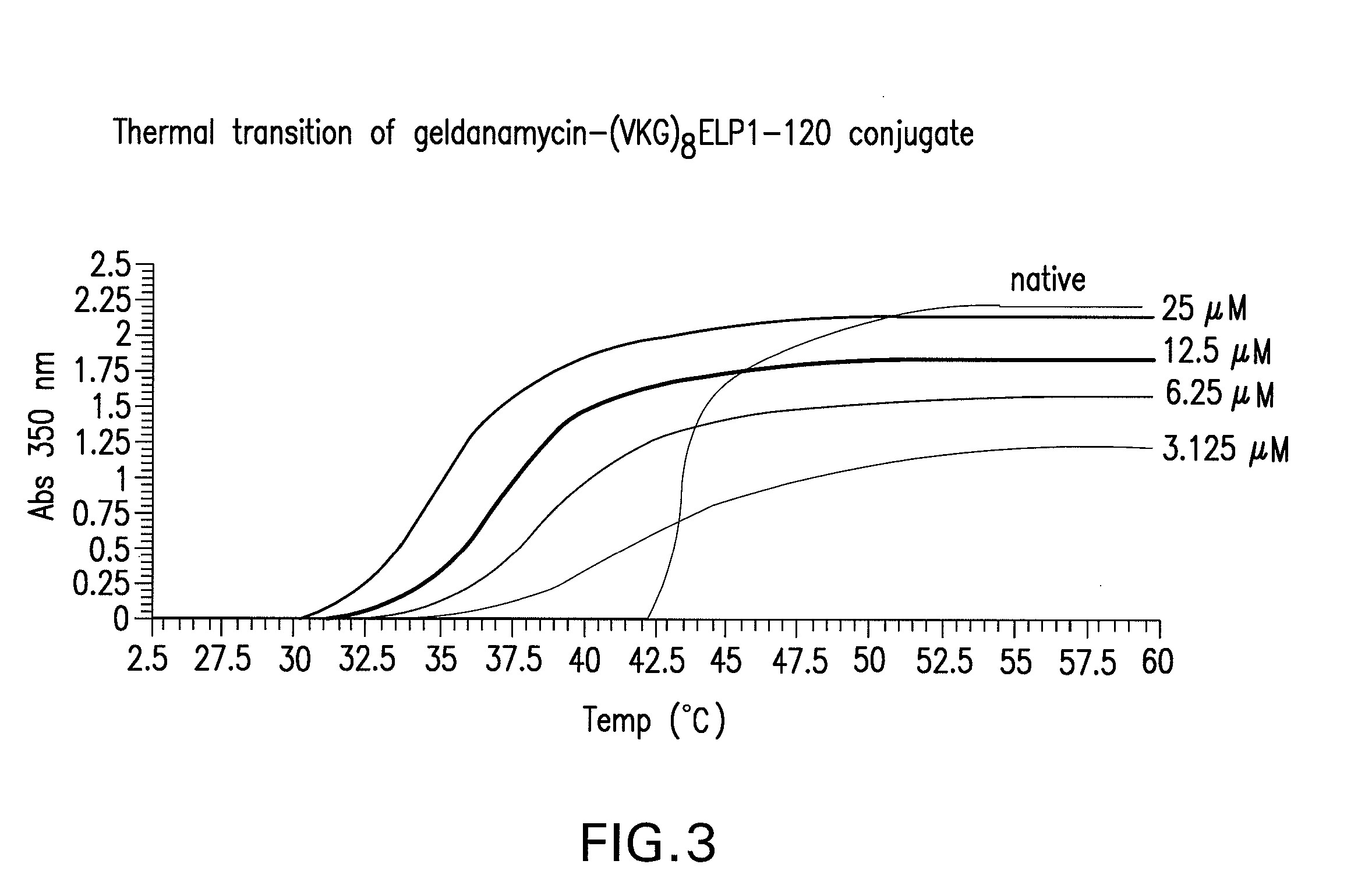Elastin-like polymer delivery vehicles
a polymer and polymer technology, applied in the field of molecular biology, can solve the problems of limiting the ability of the therapeutic to diffuse to its site action and the rate of clearance, limiting the use and efficacy of the therapeutic, and limiting the hydrophobicity of some therapeutic molecules, so as to achieve slow or controlled release of the therapeutic molecul
- Summary
- Abstract
- Description
- Claims
- Application Information
AI Technical Summary
Benefits of technology
Problems solved by technology
Method used
Image
Examples
example 1
Preparation of Geldanamycin (Ga) Derivatives
[0175]GA was obtained by fermentation of Streptomyces hygroscopicus subsp. geldanus (ATCC 55256) as described previously (DeBoer et al., 1970). Briefly, an ISP2 plate was streaked with a frozen spore suspension (1.5×10−6 mL−1) and grown until distinct white colonies appeared (˜30° C., ca. 10 days). A single colony was used to inoculate 100 mL of fermentation medium (28° C., in dark, 270 rpm orbital shaker), and after 5 days GA production was verified by HPLC analysis of a 1:1 EtOAc broth extraction. A 2-L baffled Erlenmeyer flask with 25 g of glass beads and 0.5 L of fermentation medium was inoculated with 5 mL of inoculum (28° C., in dark, 270 rpm orbital shaker). The 5-day fermentation broth was centrifuged (10 min, 8000×g), filtered, and the filtrate extracted (1:1 EtOAc, 3×). Solids were lyophilized and extracted with MeOH. The crude organic extracts were reduced in vacuo, filtered, and purified over silica (1:1 EtOAc:hexanes, 2×). Fin...
example 2
Preparation of Geldanamycin (Ga) Conjugates
[0178]GA-conjugated (VKG)8ELP1-120 was synthesized by the coupling of 3 to (VKG)8ELP1-120 as shown in FIG. 1, step iii. Briefly, 11 mg (0.02 mmol) of 3 was dissolved in 15 mL of DMSO, activated by adding 25.2 mg (2.2 mmol) of dicyclohexyl carbodiimide (DCC) and 23 mg (0.2 mmol) of N-hydroxy sulfosuccinimide at room temperature for 3 hr. The 50 mg (1 μM of NH2-group on lysine residue) of (VKG)8ELP1-120 dissolved in DMSO (final content of water in (VKG)8ELP1-120 solution was about 10%) and added to the activated GA solution. The reaction was carried out in the presence of 0.2 eq. DMAP (290 mg, 3.68 mmol) at room temperature for 5 hr followed by filtration through a 0.45 μm filter unit (Millipore, Bedford, Mass.) to remove insoluble materials. The conjugate was precipitated by adding 100 mL of acetone to the reaction mixture and isolated by centrifugation at 15000×g for 10 min. The GA-(VKG)8ELP1-120 conjugate was dissolved in 1 mL PBS and stor...
example 3
Thermal Transition of GA-(VKG)8ELP1-120
[0180]Free ELP has a sharp transition that occurs over a 1-2° C. range with a Tt value of 43.6° C. at 25 μM concentration. In contrast, this particular GA-ELP conjugate (GA-(VKG)8ELP1-120) shows a broad thermal transition that occurs over a 10-12° C. range (FIG. 3). The Tt value of the GA-ELP conjugate decreased to 39.2° C.
PUM
| Property | Measurement | Unit |
|---|---|---|
| thermal transition temperature | aaaaa | aaaaa |
| diameter | aaaaa | aaaaa |
| diameter | aaaaa | aaaaa |
Abstract
Description
Claims
Application Information
 Login to View More
Login to View More - R&D
- Intellectual Property
- Life Sciences
- Materials
- Tech Scout
- Unparalleled Data Quality
- Higher Quality Content
- 60% Fewer Hallucinations
Browse by: Latest US Patents, China's latest patents, Technical Efficacy Thesaurus, Application Domain, Technology Topic, Popular Technical Reports.
© 2025 PatSnap. All rights reserved.Legal|Privacy policy|Modern Slavery Act Transparency Statement|Sitemap|About US| Contact US: help@patsnap.com



